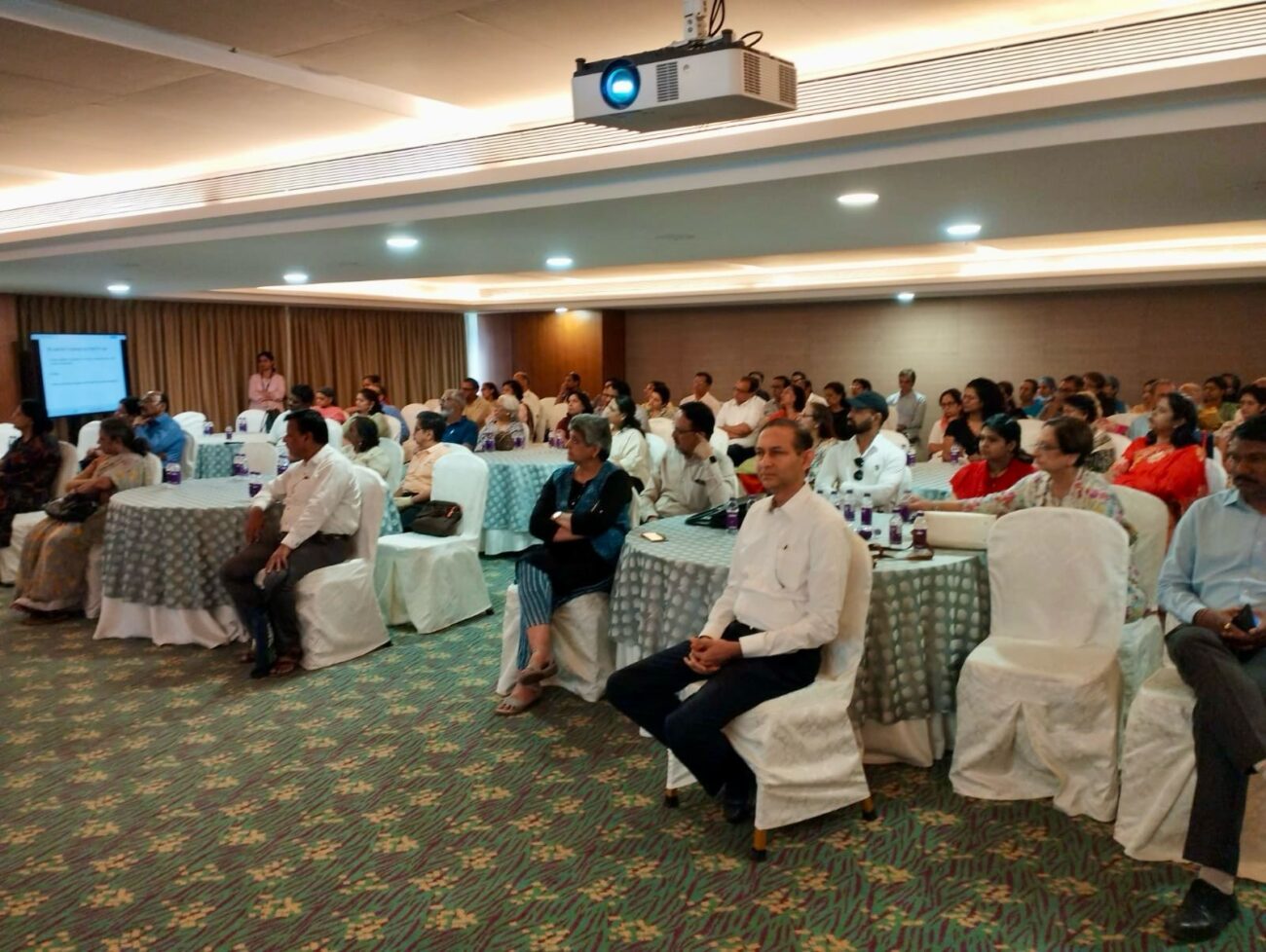Energy Efficient Hospital Design in India: A New Approach to Sustainability
AR. PREETI CHAUHAN, Associate Professor, Department of Architecture and Planning Indira Gandhi Delhi Technical University for Women India is the world’s second most populated country in the world with a population of 1.32 billion. It is projected to
AR. PREETI CHAUHAN, Associate Professor, Department of Architecture and Planning Indira Gandhi Delhi Technical University for Women
India is the world’s second most populated country in the world with a population of 1.32 billion. It is projected to surpass China (largest population) reaching 1.7 billion by 2050. There is a shortage of 2 million hospital beds in India at present. Roughly 100,000 hospital beds have been added annually over the last decade and if India continues to maintain this rate, it will fall short of target by 1.6 million beds by 2034.
With the need of as many hospitals, we may want to sit back and think about the quantum and quality of buildings we are projected to construct in the near future. Hospital buildings are major energy consumers because of their high demand of heating and cooling for controlled medical parameters and round the clock functioning. In light of present demand and growth of healthcare facilities in India, it is important to understand the energy load on the present infrastructure that will be enhanced manifold in future.
When we think about energy that a hospital or any other building consumes, is it only limited to the use of energy saving devices and equipment? or envelope treatment of the building to reduce heat gain?Or can Energy Efficiency be a major role player in the planning and design stage of a hospital project. Is designing a hospital limited to providing an aesthetically functional building? Or patient centric care? Or centralized services? Or is it something beyond just that that may help in an energy efficient building?
It is a well-known fact that although the component of expenditure on design of a hospital is meager compared to the expenditure on operation and maintenance of the building, yet the impact of a good design may help in reducing these costs substantially. While designing, many of us concentrated more on concept building and service design in a hospital, Are we also bringing in the relationship between the context and energy efficiency measures? Is it just use of solar panels or rainwater harvesting that may lead to an energy efficient hospital? There are three suggested schools of thought that will add to the above energy efficient measures;
Segregation and Zoning of building components/departments as per their energy need and controlled medical environments.
Patient centric hospitals focus on therapeutic healing environments. India has defined diverse climatic zones across the country. Adopting design interventions to incorporate active and passive heating and cooling techniques may help in reducing energy consumption.
As major population of India resides in rural areas (68.84%), a part of design component may segregate energy demands based on comfort indicators for different regions like physical adaptabilities to heat and cold, socio-economic base, cultural adaptability and regional lifestyles etc.
The suggested approaches may help in significantly reducing energy consumption in these 24X7 running Buildings.
Introduction: Healthcare in India: present scenario and Hospitals as major role players in energy consumption.
India faces a huge need gap in terms of availability of number of hospital beds per 1000 population. With a world average of 3.96 hospital beds per 1000 population India stands just a little over 0.9 hospital beds per 1000 population. To satisfy this demand, the private sector is rapidly building new hospitals with the best of facilities and procedures available, which can compete, with the best hospitals in the world. This raises huge challenges in terms of the energy requirement for all these hospitals and their equipment. Successful hospital planning must be measured over a long term, not just as an inviting and attractive new building but as a structure that supports these intensive and demanding functions on a 24 hour/7 day basis over what is often more than a 50 year useful life. With round- the-clock use and high occupancy, and the need for high capacity and redundant building systems, a hospital is also a large energy consumer and a prime opportunity for the benefits of green and sustainable design.
Hospitals are the most complex buildings when assessed in terms of functionality, construction and need. Unlike any other building it is one of the major consumers of energy. They have multiple users with varied healthcare demands. There is vast diversity in the energy consumption of the different departments in the hospital depending upon the medically controlled environment, user perspective, infection control and functionality. Some areas like the Operating rooms (ORS), Intensive care units (ICU), Accident and Emergency (A&E); Clinical Labs etc. require specific temperature, humidity and air changes to be maintained throughout the period of use. These impose customized load on energy consumption in the building. This article intends to understand if design innovations in planning a hospital may help in reducing energy consumptions to a certain extent to make the buildings more energy efficient.
Understanding the present approach to hospital design
Most of the published researchesemphasize on increasing energy efficiency of hospital buildings by use of low energy consuming equipment, high performance lamps for lighting, maintenance of boilers for heating, co-generation system for producing heat and electricity, central cooling and air conditioning systems with regular maintenance, adopting good building management systems, solar water heating and steam generating technologies, Passive heating and cooling techniques etc. Majorly simple and low cost measures are discussed vastly by many researchers concern mostly controlling heat gain or loss from a building, equipment planning, placement of windows and reflective glass etc., controlled door and window openings, sealing passages of heat flow in ducts, maintenance of machinery and medical equipment on regular basis, thermal insulation etc.
Hospital design conceptualizes around many design parameters like patient facilities, dignity and privacy, healing environments, need and expectations, accessible services, adaptable accommodation, multi-functional spaces, evidence based design, need assessment and material preference, lighting and space conditioning types and methods adopted, spaces and their ambience and size have been optimally studied. Integrated and coordinated Design can make a difference to health and wellbeing in a hospital referring to the physical and social environment in a hospital, neighborhood and the community it. Maximizing green spaces, therapeutic environment and sustainable transport solutions is another parameter to design.
Many energy efficiency codes like ECBC, BEE, Teri-Griha, LEED etc. have formulated guidelines and parameters for all compliance approaches. These include the building systems envelope, HVAC, Lighting, electrical power, solar hot water and pumping etc.
The rooms with large volumes, long corridors, big size of the building, loss of heat through long pipelines, loss of air conditioning through long ducting systems, steam networks with very long pipes, power loss due to harmonic currents, etc. add upto a large amount of energy consumption in the hospital building.
It may be explored that other than all the above mentioned measures for reducing energy consumption in hospital buildings, if we may be able to reduce the length of ducting and exposure and segregate similar functionality areas into various zones without hampering the medical flow-paths, we may be able to reduce the energy consumption to some extent and the values maybe substantially good.This article is the first in series to approach the above-cited issue of energy loss and additional maintenance costs.
SUGGESTED APPROACH: Parameters and theory of sustainable design
Energy efficiency consciousness is a not a very old concept in sustainability design. The concept or methodology of energy efficient building design has been either developed as a parallel thought process or an afterthought in major buildings in India. The technologies and methodologies related to the same is concentrating on reducing energy consumption by controlled use and maintenance of medical equipment and advanced building material and technical systems for lighting, heating and HVAC. The prime thrust is to realize energy efficiency as a design tool right from the concept to commissioning of the project. This would help to further reduce the load of electricity consumption in the building and avoid losses due to lengthy ducting and ignorant layout planning.
Every healthcare architect must keep in view the four major perspective players in the design and development of a healthcare facility. They are Patient’s and other end-users, innovations in design, therapeutic healing and energy efficiency. The layout planning plays an important role guiding the way any hospital would function. Other than the medical flow-paths of various departments and their supporting infrastructure for a patient centric design, it is important to know that the placement of vertical and horizontal circulation planning also eases the end users in proper way-finding, security, privacy and reduction in the use of lifts etc.
For example, in a hospital major inflowing population per day comprises of maximum floating population (those visitors coming for consultation and diagnostics in the Out-patient Department (OPD), treatment, follow-ups and observations only) as compared to the resident population (patient visitors in the In-patient Department (IPD), Intensive care units (ICU), Operating Rooms (OR’s) and Accident and Emergency (A&E). if the layout plan is such that the floating population visits are limited to first floor only, then major population visit is pedestrianized and visitors on wheel chairs or otherwise-abled may use the ramp. This would reduce the use of Lifts to a large extent. The resident population, doctors, staff and administrators would use themwho maybe placed at higher levels in the hospital building.
Similarly segregating entrances as per user mobility would enhance work efficiency, monitoring and security, privacy and ownership of healthcare workforce, decentralized work placement of reception and information staff from the billing and admissions.
The various departments of a hospital building maybe segregated as per energy consumption and functionality. This would help the healthcare planners to design the vertical stacking and horizontal circulations simultaneously and with the use of energy efficiency as a design tool. The segregation would facilitate in
Reducing the length of ducting systems of Air Conditioning, Heating etc. if medically controlled departments are stacked one over the other and the supply from chillers and air handling units may also be stacked vertically. This would also facilitate in maintenance works from the service cores without any disturbance to patients etc.
Reducing the length of electrical cabling and networking throughout the building as per the need of the type of department like stacking of all OPD areas vertically or placed horizontally over a floor plate. This may help to provide a distinguished and dedicated electrical system, air cooling/conditioning system etc.
Reduction in the length of medical gas pipelines leading to bed head panels. If the IPD’s are stacked one over the other then the medical gas pipelines, electrical cabling, air-handling units per ward, air cooling/conditioning systems can also be stacked. This block or area may have a dedicated lift and staircase core for the patients, doctors and staff and patient relatives and visitors separately.
Reducing the length of water supply, sanitation and drainage pipelines. Streamlining of dirty and clean services in the hospital.
Reducing the length of pneumatic tube systems ducting and enhancing its functionality by stacking Departments of use vertically. This would enable faster emergency diagnostics from the Labs and vice versa resulting in faster patient treatment and minimizing triage time.
The segregation and stacking system although is a block model system yet every floor is complete in its own capacity. The reduction in lengths of the above mentioned ducts, cables and pipelines would enable a huge drop in the installation costs, maintenance costs and ease of service delivery.
It may also be noted that the OPD and Administration usually functions only till the evening hours in every hospital. If this block is segregated as a separate unit, then after the closing hours, the entire electrical supply to the block maybe shut down. On the contrary where these activities are scattered over different floor plates and different locations, the vertical lift and staircase cores and the lobbies have to be kept lit 24×7. This if observed separately as energy loss may account for a substantial cost.
Thus, Energy efficiency should be treated as a design tool from the inception of the project that would help in substantially reducing the cost of installations, operations and maintenance in a hospital building. A small measure today may lead to long-term benefits.





